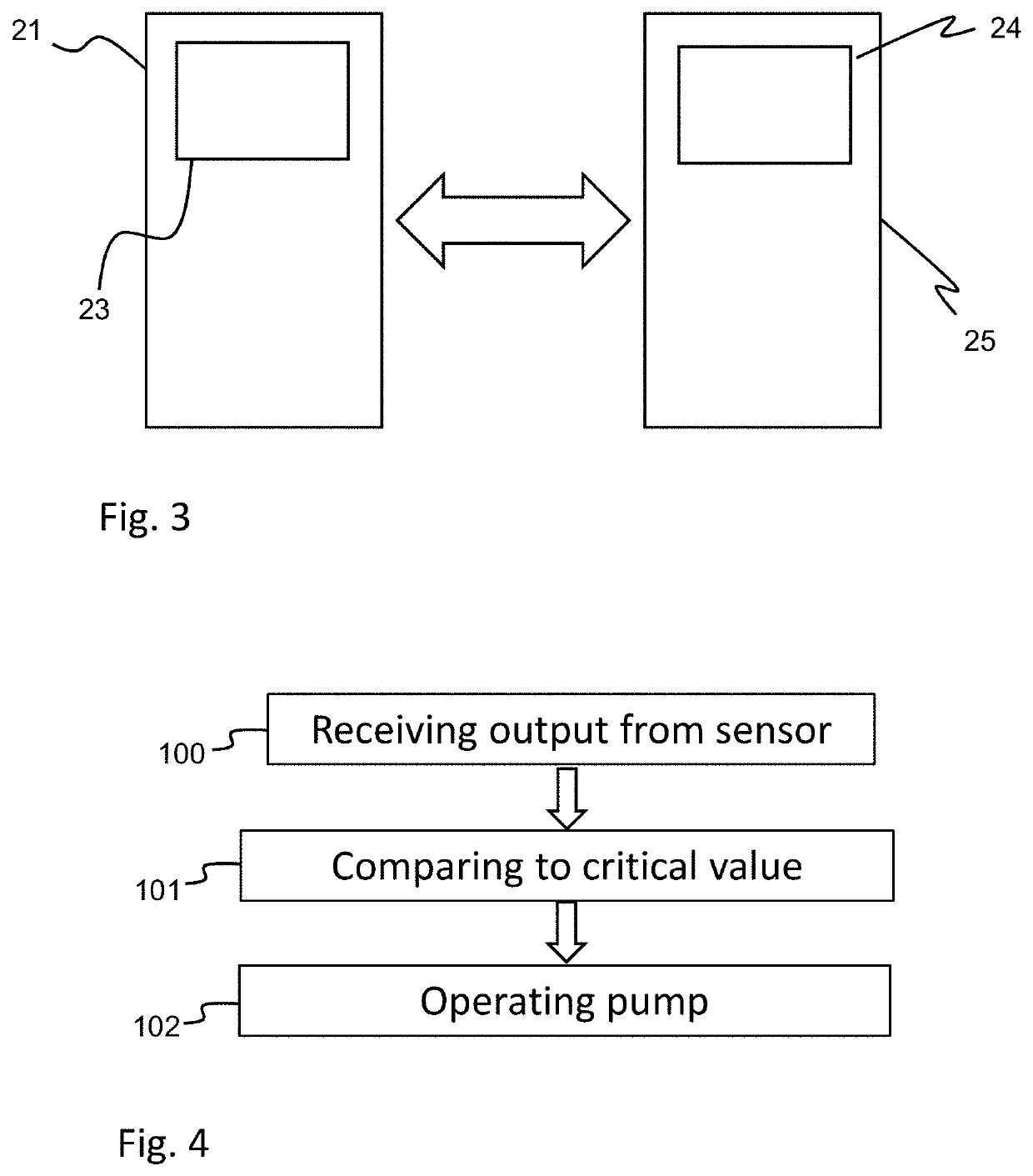Circulating-fuel nuclear reactor
a technology of circulating fuel and nuclear reactor, which is applied in the direction of nuclear reactors, nuclear elements, greenhouse gas reduction, etc., can solve the problems of challenging criticality control in circulating fuel nuclear reactors
- Summary
- Abstract
- Description
- Claims
- Application Information
AI Technical Summary
Benefits of technology
Problems solved by technology
Method used
Image
Examples
Embodiment Construction
[0065]FIG. 1 provides a schematic illustration of a Molten Salt Fast Reactor (MSFR) 1, which is an example of a circulating-fuel nuclear reactor. The MSFR includes a reactor core chamber 2 for receiving molten fuel salt (i.e. a fluid fuel) containing fissile material for sustaining a nuclear chain reaction. The reactor core chamber 2 is in fluid communication, by way of pipes 3, with a heat exchanger 4 such that molten fuel salt may be transferred between the reactor core chamber 2 and the heat exchanger 4. The MSFR 1 further includes a variable flow rate pump 5 for pumping molten fuel salt from the reactor core chamber 2 out of the reactor core chamber 2 at an outlet 6, through the heat exchanger 4, and back into the reactor core chamber 2 at an inlet 7, around a reactor flow loop indicated generally by arrows 8 and 9. In other examples, the pump may be located at any position within the flow loop.
[0066]The MSFR 1 also includes a generator heat exchanger 10 in fluid communication, ...
PUM
 Login to View More
Login to View More Abstract
Description
Claims
Application Information
 Login to View More
Login to View More - R&D
- Intellectual Property
- Life Sciences
- Materials
- Tech Scout
- Unparalleled Data Quality
- Higher Quality Content
- 60% Fewer Hallucinations
Browse by: Latest US Patents, China's latest patents, Technical Efficacy Thesaurus, Application Domain, Technology Topic, Popular Technical Reports.
© 2025 PatSnap. All rights reserved.Legal|Privacy policy|Modern Slavery Act Transparency Statement|Sitemap|About US| Contact US: help@patsnap.com



